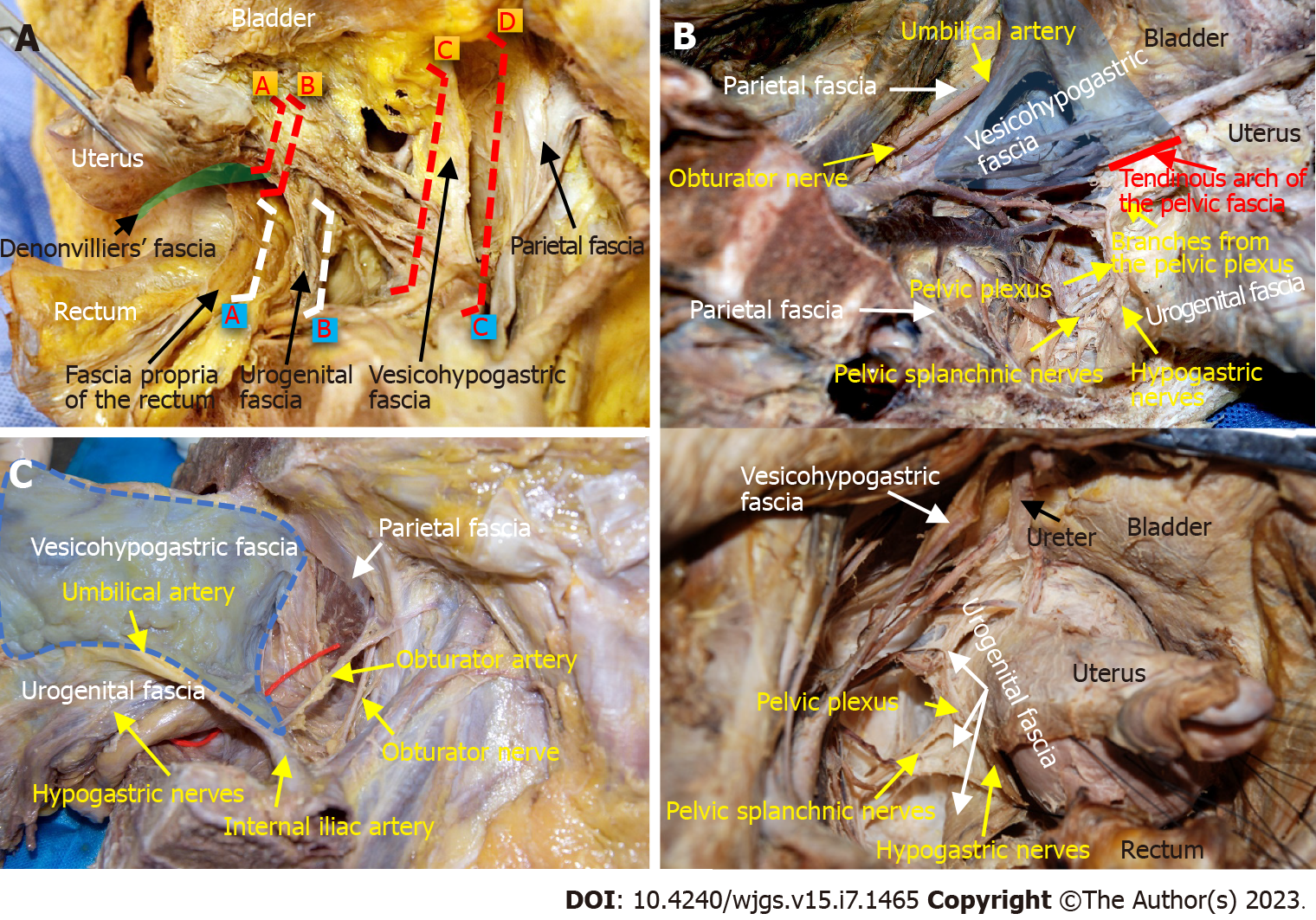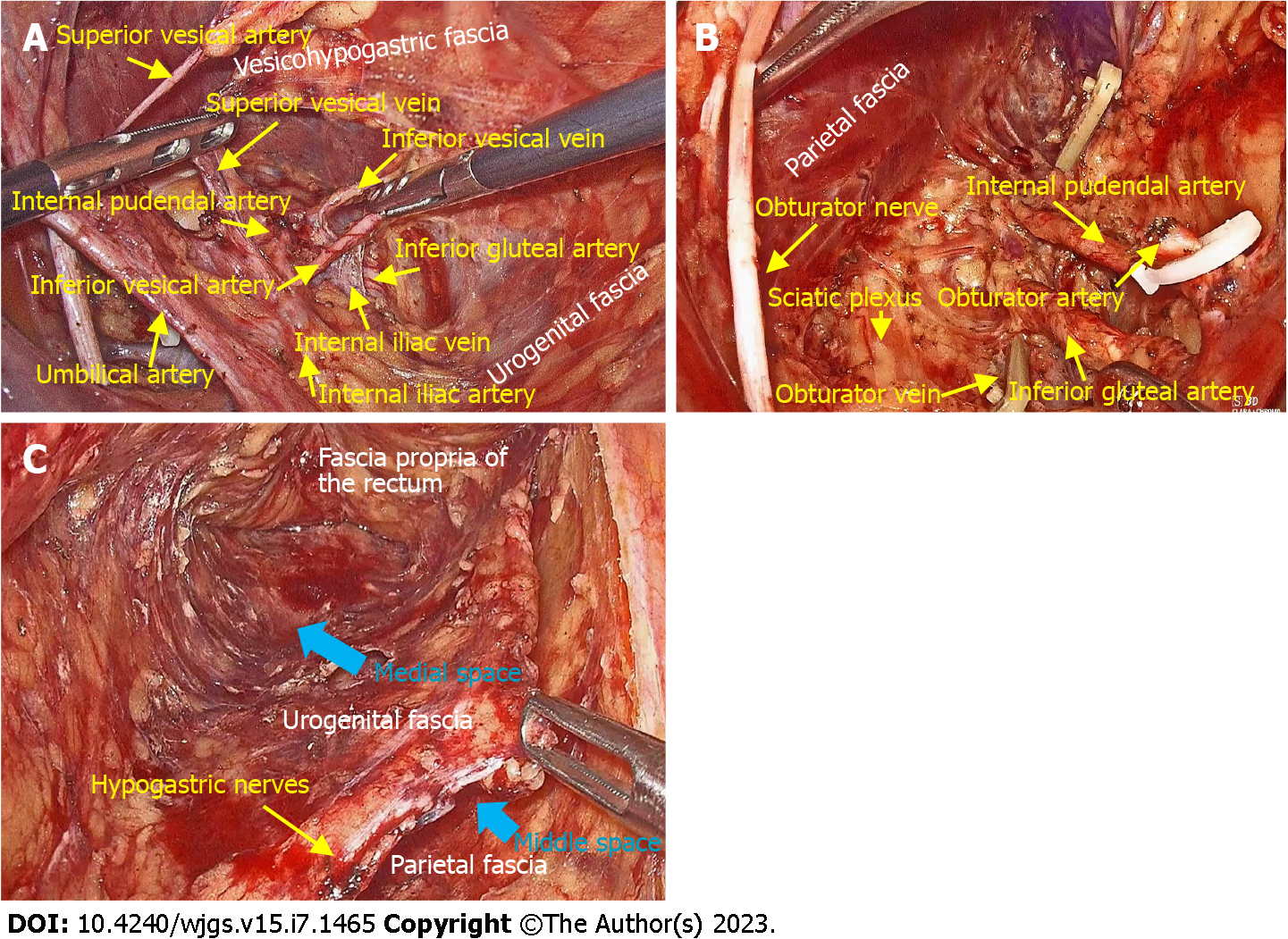Copyright
©The Author(s) 2023.
World J Gastrointest Surg. Jul 27, 2023; 15(7): 1465-1473
Published online Jul 27, 2023. doi: 10.4240/wjgs.v15.i7.1465
Published online Jul 27, 2023. doi: 10.4240/wjgs.v15.i7.1465
Figure 1 Cadaver dissection.
A: The lateral resection lines of the Querleu-Morrow classification for radical hysterectomy (types A to D) and the classification for radical rectal cancer surgery (types A to C); B: The middle space lies between the urogenital fascia and the vesicohypogastric fascia; C: The lateral space lies between the vesicohypogastric fascia and the parietal fascia.
Figure 2 The theory of “four fasciae and three spaces” are showed in photograph of operation and hand-drawn diagram.
The fascia propria of the rectum, urogenital fascia, vesicohypogastric fascia and parietal fascia form three spaces (medial, middle, and lateral), and blood vessels and nerves are precisely positioned in the fascia or space. A and B: Laparoscopic observation; C: Hand-drawn diagram. TME: Total mesorectal excision; LLND: Lateral lymph node dissection.
Figure 3 Laparoscopic observation.
A: The anterior trunks of internal iliac vessels and most of their branches run in the middle space; B: The lateral space mainly contains the neural structures (obturator nerve, sciatic plexus, etc.) in addition to the obturator vessels; C: Type A and type B surgeries are performed in the medial and middle spaces, respectively. Type A surgery corresponds to the urogenital fascia-preserving total mesorectal excision (TME), and type B surgery corresponds to the classical TME.
Figure 4 The lateral resection lines of type B1 and type B2 surgeries in cadaver dissection.
A: The aggregated pelvic plexus can be separated from the urogenital fascia to complete a nerve-sparing type B1 procedure (white dotted line); B: The diffuse pelvic plexus is in tight contact with the urogenital fascia and has to be resected together with the urogenital fascia, which corresponds to the type B2 procedure (yellow dotted line).
Figure 5 Type C surgery is equivalent to total mesorectal excision plus lateral lymph node dissection, and aims to completely dissect all three spaces (laparoscopic observation).
A and B: Two subcategories are defined in type C procedure, type C1 with autonomic nerve preservation (A) and type C2 without preservation of autonomic nerves (B).
- Citation: Jiang HH, Ni ZZ, Chang Y, Li AJ, Wang WC, Lv L, Peng J, Pan ZH, Liu HL, Lin MB. New classification system for radical rectal cancer surgery based on membrane anatomy. World J Gastrointest Surg 2023; 15(7): 1465-1473
- URL: https://www.wjgnet.com/1948-9366/full/v15/i7/1465.htm
- DOI: https://dx.doi.org/10.4240/wjgs.v15.i7.1465













